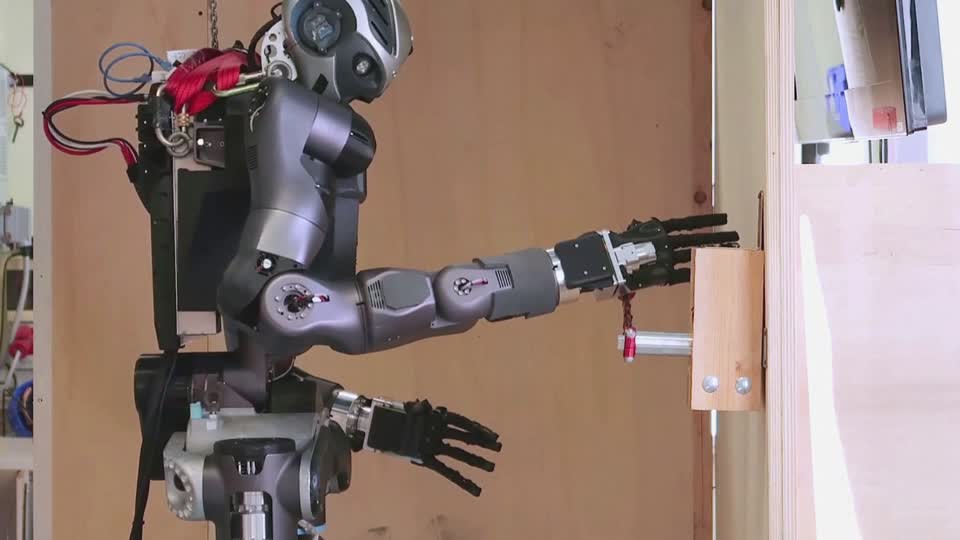There's a $10 million race to build you a robot avatar by 2021

AUSTIN — Four years from now, physical attendance at SXSW could be optional for those who choose to send a sci-fi-style avatar in their place.
That vision closed out Monday’s programming at the festival, as sold in a talk onstage by XPrize Foundation founder Peter Diamandis announcing the latest in a series of XPrize competitions, in which non-government teams from around the world compete to solve an intimidatingly-difficult problem.
The ANA Avatar XPrize, sponsored by All Nippon Airways, will offer $10 million in total awards to whoever builds “a multipurpose avatar system that will seamlessly transport human skills and experience to the exact location where and when they are needed” by October 1, 2021.
Faraway, so close
Diamandis pitched the avatar concept as the logical outcome of exponential advances in computing power and robot capability meeting 5G wireless with its gigabit-speed and low-latency connectivity.
Avatars would enable their human operators to see, hear and touch via the robot’s sensors and actuators, essentially allowing them to teleport their skills and knowledge to anywhere in the world — although the contest requirements only require the avatar to work from at least 100 kilometers away.
“It’s about dislocating the knowledge from the physical location of action,” he said.
The doctor and entrepreneur described three possible use cases: disaster recovery, multi-purpose utility and personal care.
The first seems obvious, since we already use robots to extend human senses to places too dangerous for a direct human presence. Diamandis raised the example of sending an avatar into a failing nuclear plant to adjust whatever controls might stop a meltdown.
The second might be a harder sell, at least in the examples of surgery by avatar that Diamandis raised. While avatars could get around the uneven geographical distribution of medical talent and training, they won’t give the world’s most talented surgeons any more time in which to practice their craft.
And personal care — as Diamandis put it, to “go someplace and give someone a hug” — will depend heavily not on how effectively the avatar conveys the scene to its human, but on how the avatar represents the human.
The contest rules don’t mandate human-looking robots. “We don’t specify what technology they should use or what it should look like,” Diamandis said. The avatars depicted in his presentation made no attempt to mimic humans along the lines of, say, the robots in the 2015 movie Ex Machina.
XPrize feats and flops
The ANA Avatar XPrize’s goal might seem solidly locked in the realm of science fiction, but past XPrize competitions — all modeled after the 1919 Orteig Prize that rewarded Charles Lindbergh’s 1927 solo flight across the Atlantic — have motivated engineers and programmers to accomplish things previously deemed implausible.
The first such contest, 1996’s Ansari X Prize, succeeded brilliantly in 2004 when SpaceShipOne became the first privately-built reusable spaceship to complete two suborbital flights in two weeks.
In his talk, Diamandis lauded Richard Branson’s subsequent move to commercialize that rocket. He did not mention Virgin Galactic’s numerous setbacks — one test vehicle broke apart in flight in 2014, killing one pilot, and the company has yet to resume powered test flights.
He also talked up such past competitions as the 2012 contest sponsored by Qualcomm (QCOM) to build a real-world medical-diagnosis equivalent of Star Trek’s tricorder and current competitions to harvest water from the air, make ocean floors accessible to robots, and develop an Android app that could teach basic literacy and math to students around the world.
Diamandis was especially effusive about that $15 million contest’s potential, saying “We’re going to open-source the winning software, so you can build a billion teachers a year.”
One other XPrize competition went unmentioned: The Google (GOOG, GOOGL) Lunar XPrize competition to see who can land the first privately-build robot on the Moon. The organizers announced in January that with no chance of any of these teams meeting the March 31 deadline, nobody will win its grand prize.
Techno-utopianism
While much of SXSW’s talks this year have emphasized the dangers of technology, Diamandis took a more positive approach in his talk.
“We’re living during the most extraordinary time ever in human history,” he said at its start. “It’s a time when we’re making the impossible possible every day.”
And when one audience question asked about the potential misuse of avatars, he simply observed that every technology “can be used for good and bad.”
As he sees this concept, avatars will become a household item and, as he suggested at a subsequent reception, “the future of transportation.”
I’m skeptical of that last bit. Avatar SXSW attendance would leave those visiting virtually no way to enjoy the taste of barbeque or breakfast tacos, and that’s no way to have a trip to Austin.
More from Rob:
Email Rob at [email protected]; follow him on Twitter at @robpegoraro.
Follow Yahoo Finance on Facebook, Twitter, Instagram, and LinkedIn.
